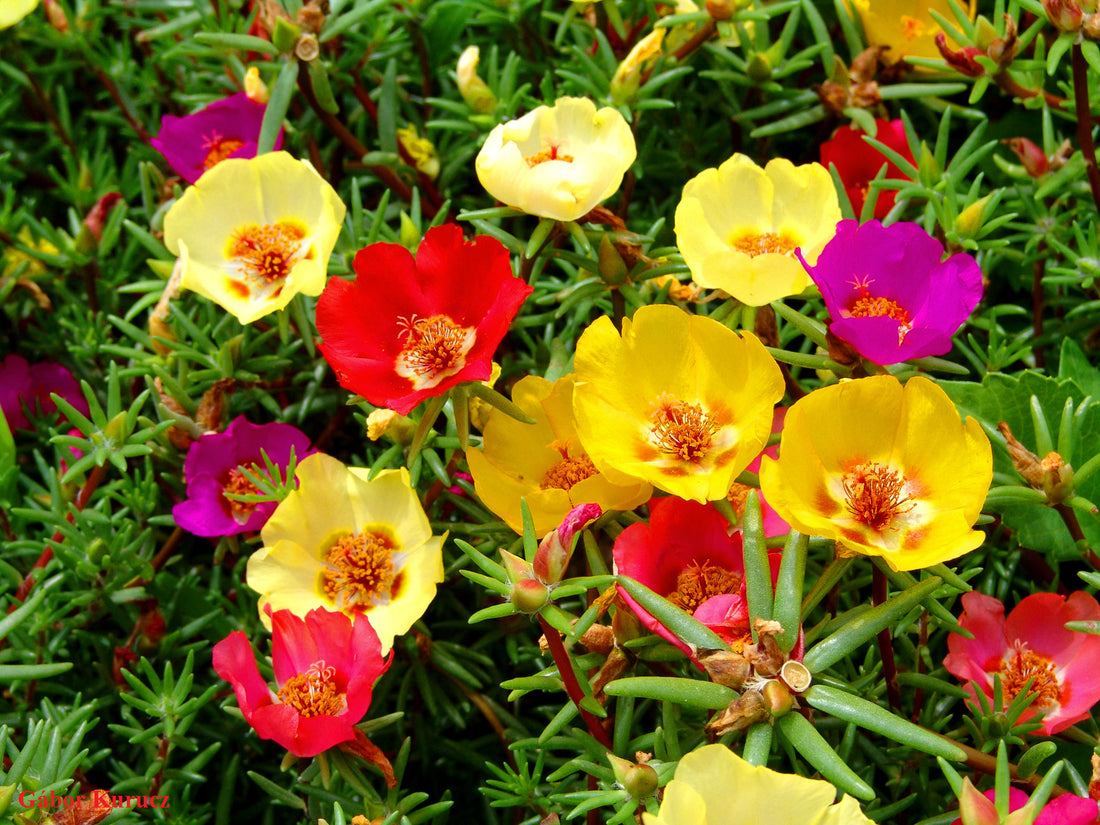Adding a burst of color and charm to your garden, portulaca, commonly known as "moss rose," is a delightful flowering plant that thrives in hot and sunny conditions. With its vibrant blooms and low-maintenance requirements, portulaca is a favorite among both novice and experienced gardeners. In this blog, we'll explore the ins and outs of growing and caring for portulaca, so you can enjoy its beauty throughout the growing season.
Getting to Know Portulaca:
Portulaca is a succulent annual plant that originates from South America. It is well-loved for its striking, cup-shaped flowers that come in an array of colors, including shades of pink, red, orange, yellow, and white. The plant's fleshy leaves and stems store water, making it a drought-tolerant choice for gardens in arid or sunny climates.
Ideal Growing Conditions:
Portulaca is a sun-worshipper, so choose a sunny spot in your garden that receives at least 6 hours of direct sunlight per day. It thrives in well-draining soil with good airflow. If your soil is heavy or clayey, amend it with sand or perlite to improve drainage.
Planting Portulaca:
Timing: Portulaca can be sown outdoors after the last frost date in your area. Alternatively, you can start seeds indoors 6-8 weeks before the last expected frost.
Seeds or Seedlings: You can find portulaca seeds at garden centers or nurseries. Sow the seeds on the soil surface and lightly press them down, as they require light to germinate. If using seedlings, space them about 6-8 inches apart.
Watering: Keep the soil consistently moist until the seeds germinate and the seedlings establish themselves. Once established, reduce watering frequency as portulaca prefers drier conditions.
Caring for Portulaca:
Watering: While portulaca is drought-tolerant, regular watering during dry spells will promote healthier growth and more vibrant blooms. Water at the base of the plant to avoid wetting the leaves, which can lead to fungal issues.
Fertilizing: Portulaca doesn't require heavy feeding. You can apply a balanced, water-soluble fertilizer every 4-6 weeks during the growing season to encourage continuous blooming.
Deadheading: To prolong flowering, pinch or snip off spent blooms. This encourages the plant to redirect its energy into producing new flowers rather than setting seeds.
Pest and Disease Control: Portulaca is relatively resistant to pests and diseases. However, keep an eye out for aphids, mealybugs, and snails. If any issues arise, treat them promptly with appropriate remedies.
Container Gardening:
Portulaca is an excellent choice for container gardening. Select a well-draining potting mix and ensure that the container has drainage holes. Group different-colored portulaca plants in a single container for an eye-catching display of colors.
Overwintering:
Portulaca is an annual plant, which means it completes its lifecycle within a single growing season. However, you can collect seeds from mature plants to sow in the following year.
Conclusion:
Portulaca, with its dazzling hues and carefree nature, can transform your garden into a vibrant oasis. Whether you're a seasoned gardener or just starting out, this delightful succulent is a must-have for any sunny garden space. By following the simple steps outlined in this guide, you'll be well on your way to cultivating a flourishing portulaca display that will bring joy and beauty to your outdoor haven.

